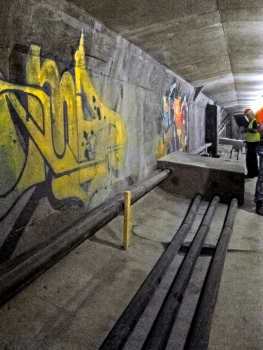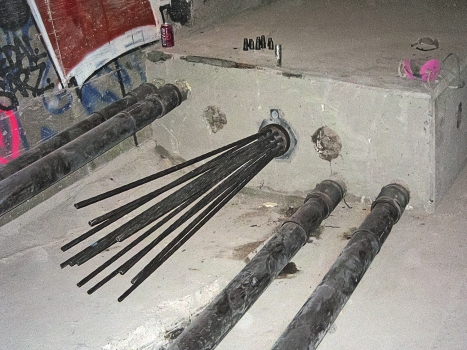Repair of the Plymouth Avenue Bridge in Minneapolis, USA
The Plymouth Avenue Bridge is a four lane, twin segmental box girder bridge carrying Plymouth Avenue over the Mississippi river on the north side of Minneapolis, Minnesota. The bridge has a total length of 287.4 m (943 ft), with the longest span reaching 43.6 m (143 ft). Built in 1983 using form travellers, it was the first segmental cast in place bridge in Minnesota.
Media
Following a 2010 routine inspection, the bridge was closed after corroded post tensioning tendons were discovered. Upon further evaluation, it was later determined that the post tensioning tendons had corroded due to a failure of the bridge's drainage system. The drainage pipes are located inside the box girders. Due to the failure, deicing chemical leakage accumulated in the interior of the box, thereby corroding both the rebar and the posttensioning tendons in the structure's bottom slab.
Installation of an additional multistrand post tensioning system
A long-term and economical strengthening solution was needed to restore the bridge to service as quickly as possible. Corven Engineering proposed to install an additional external multistrand post tensioning system inside the hollow box girders. The General Contractor hired DSI USA to provide a suitable post-tensioning system and to support the jobsite with engineering services and installation techniques. Five new type 12-0.6" strand tendons were installed as external tendons in each hollow box girder. Each tendon was anchored in new concrete blisters created at the ends and running through new concrete deviators cast at the appropriate box floor slab locations.
The design required the steel embed ducts to deviate in two planes, creating difficulty in obtaining field measurements for the production and installation of these components. In addition, the concrete anchor blisters newly installed at the upper regions of the girder interior for anchoring the tendons left little space to manoeuvre a posttensioning jack into position. Consequently, DSI was tasked with developing a unique stressing protocol for stressing each strand individually using monostrand jacks.
Work was completed safely, on budget and within the limited schedule.
References
- About this
data sheet - Product-ID
7419 - Published on:
08/09/2016 - Last updated on:
17/11/2021








